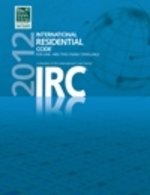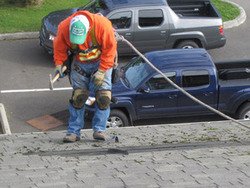Select Changes in the 2012 WA State Building Code
/October 2013
by Mike Showalter
The 2012 Washington State Building Code has been in effect since July 1, 2013. Our last Bulletin gave an overview of the revision process and some examples of what to expect in the new code. Following are select revisions updated from the 2009 IRC.

R507 Decks Modification: All deck provisions have been relocated to a new section. Provisions related to placement of bolts and lags for deck ledge attachment to the band joist have been revised to correlate to the NDS.
R612.3 Testing and labeling exceptions: 1. Decorative glazed openings; 2. Custom exterior windows and doors manufactured by a small business shall be exempt from all testing requirements in Section R612 provided they meet the applicable provisions of Chapter 24 of the International Building Code.
R703.8 Flashing: Approved corrosion-resistant flashing shall be installed at all of the following locations: Exterior window and door openings. Flashing at exterior window and door openings shall extend to the surface of the exterior wall finish or to the water resistive barrier for subsequent drainage. Pan flashing is now required for window and door openings when flashing details are not provided by the manufacturer.
R903.4.1 Secondary (emergency overflow) drains or scuppers: Where roof drains are required, secondary emergency overflow drains or scuppers shall be provided where the roof perimeter construction extends above the roof in such a manner that water will be entrapped if the primary drains allow buildup or any reason...The installation and sizing of overflow drains, leaders and conductors shall comply with the plumbing code.
R905.2.8.5 Roof Drip Edge Addition: A roof drip edge is now required for asphalt shingles.
Be sure to review and keep up with changing codes and building practices. For the 2012 WA State Building Code amendments go to https://fortress.wa.gov/ga/apps/sbcc/Page.aspx?nid=14


